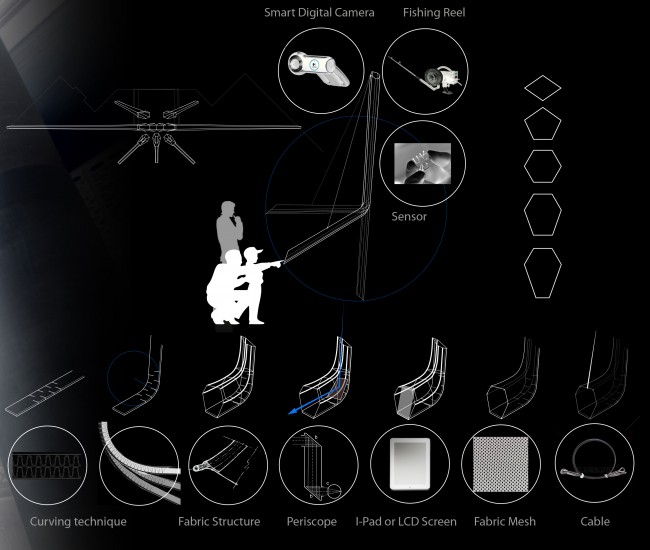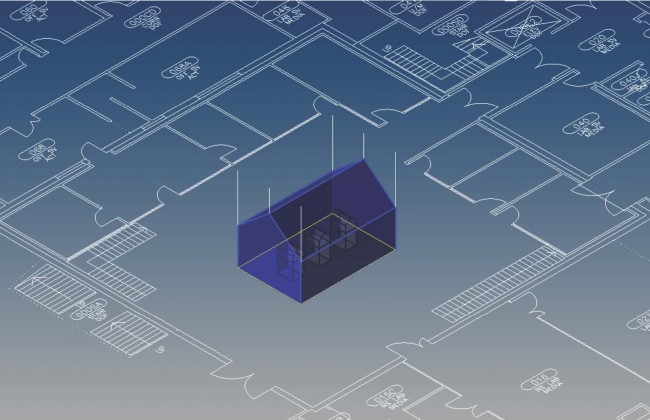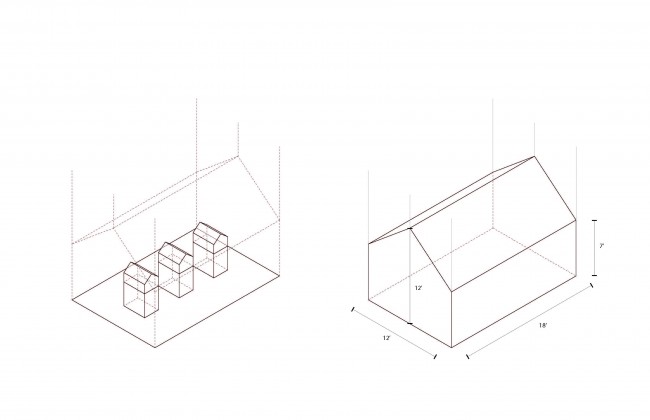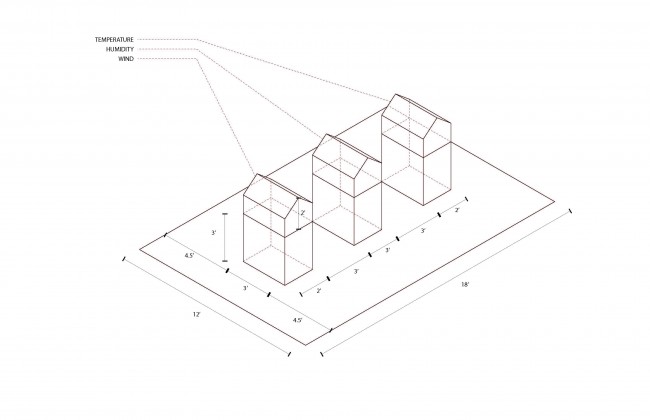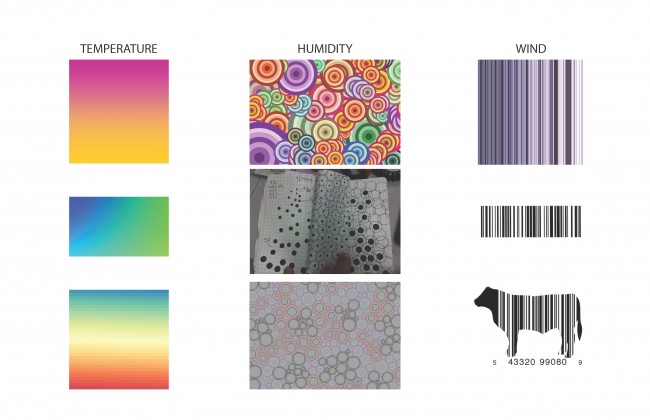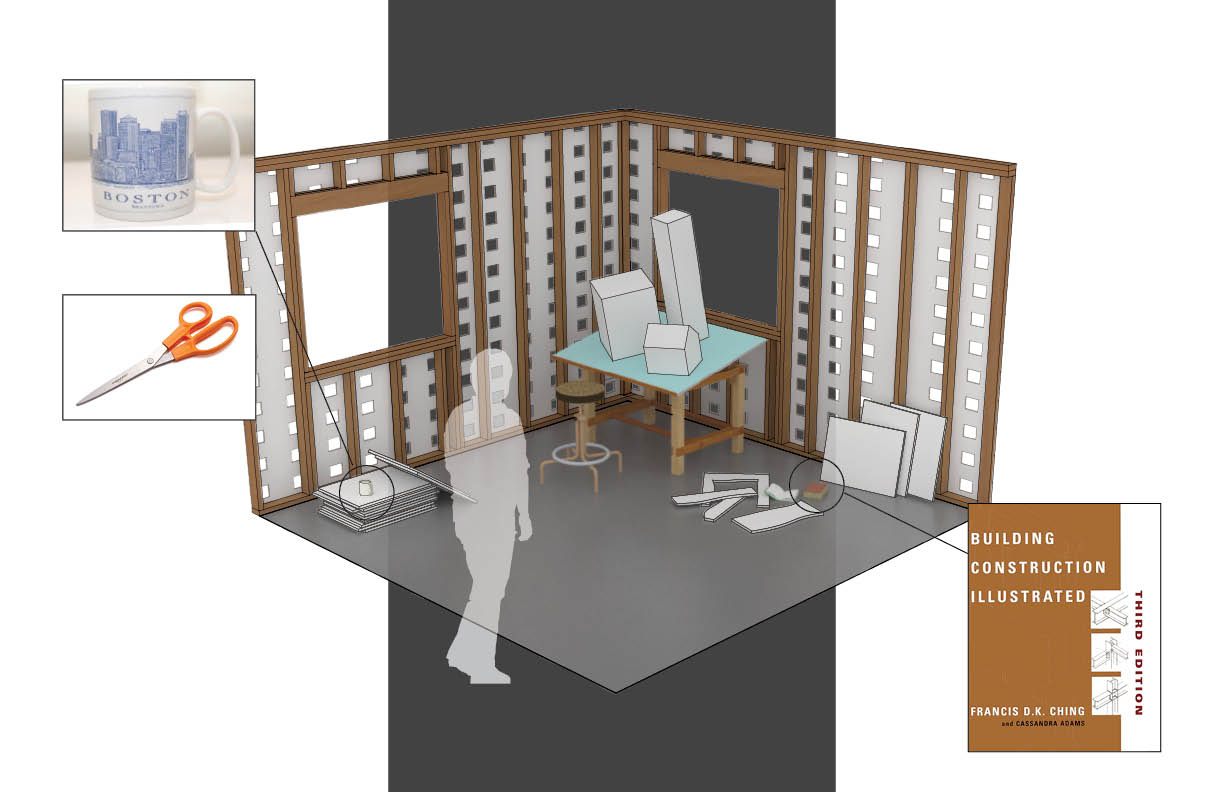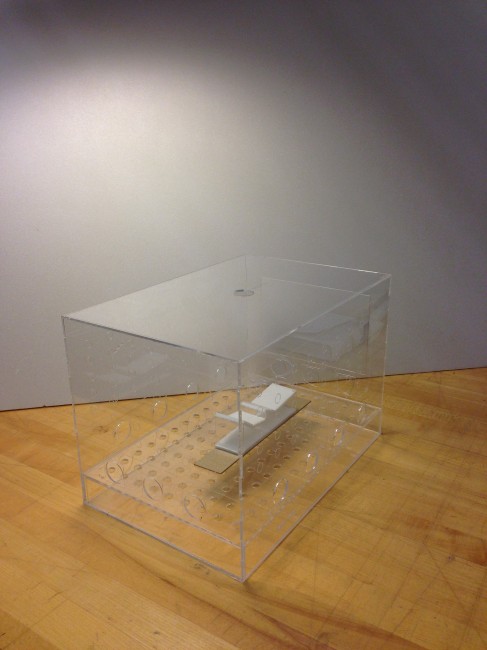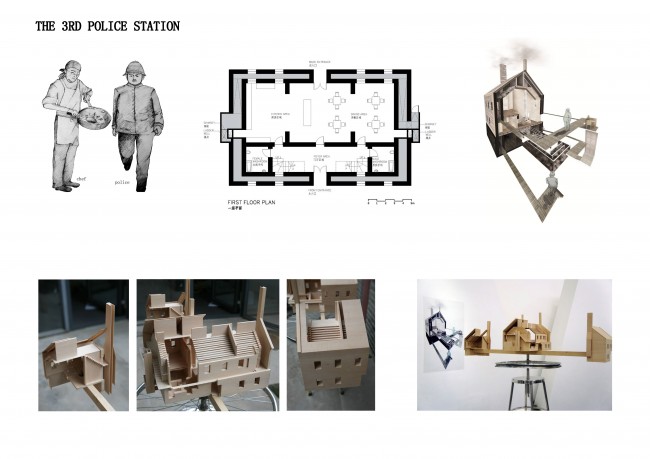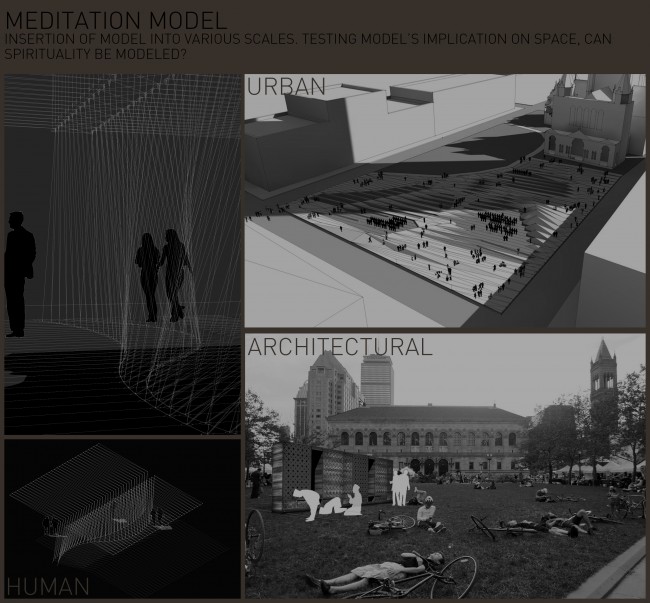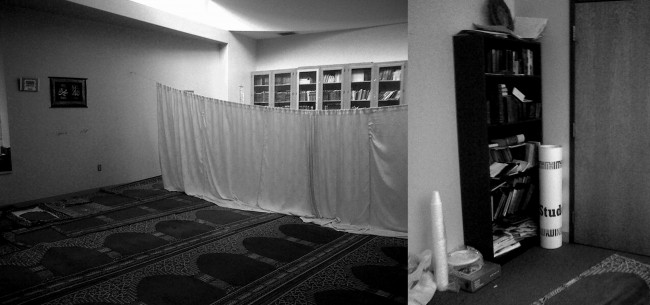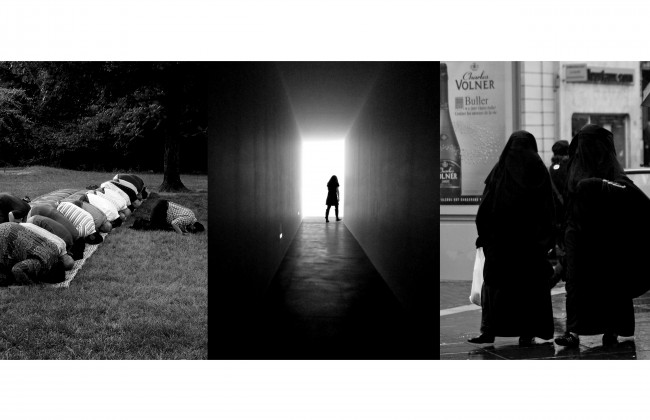The original idea of creating a display apparatus made of yarn to investigate the conditions of production and the cultural significance of yarn in Mexico was seen by the reviewers as merely reproducing the nostalgia embedded within museological display systems that fetishize the objects of their contents. My intention, however, was to create a model for a radical negotiation of contexts relating textile production and its cultural significance to notions of hybridity. The function of the collage was not to reproduce the museological form of representation, but to fragment it and critique it. The aim was to create an intertextual rendering of the different manifestations, associations, and uses of yarn to bring out and address the contradictions embedded within it. The yarn was intended to function as a materiel and a medium through which to explores these issues, both as content and as structure.
Although the reviewers’ comments did address gaps in my conceptualization of the model, it made me realize that I had lost myself in the various ideas I was trying to connect. This disjuncture made it difficult for me to feel invested in the project.
Upon further reflection, my trajectory has changed to draw instead from my biographic relationship to La Glorieta de la Amistad—the image of the three cones of yarn that constitute the context I am addressing. I propose a different model to explore how the role this structure plays as a monument to the textile industry (and by extension, as a monument to capitalism) has reconfigured the cultural dynamic of Moroleon, Guanajuato, the town in Mexico were I grew up. I have only fragmented memories of it since they erected it in the late 1990s when I was already living in the United States. To me the absurdity and the contradictions of this structure are quite clear, but from my experiences in my goings back, I know that my family and other locals feel a sense of pride toward it and see it in a self-important way—it is a symbol of success and as something to aspire to.
I now propose to make a model of La Glorieta and insert it in the gallery space to bring into focus its various contradictions of meaning and symbolism that it has accumulated since its creation. Though the model itself presents the cones as context-specific in the popular imagination, I hope it can also address more generally, the relationships we have to public spaces and collective memory. By using this biographic example as a model I hope to ground the abstract networks of information that structure and organize site-specific social practices and rituals. It is intended to create a contact zone between viewers and the context of Moroleon, to begin a process of re-inscription and transcultural inquiry.


